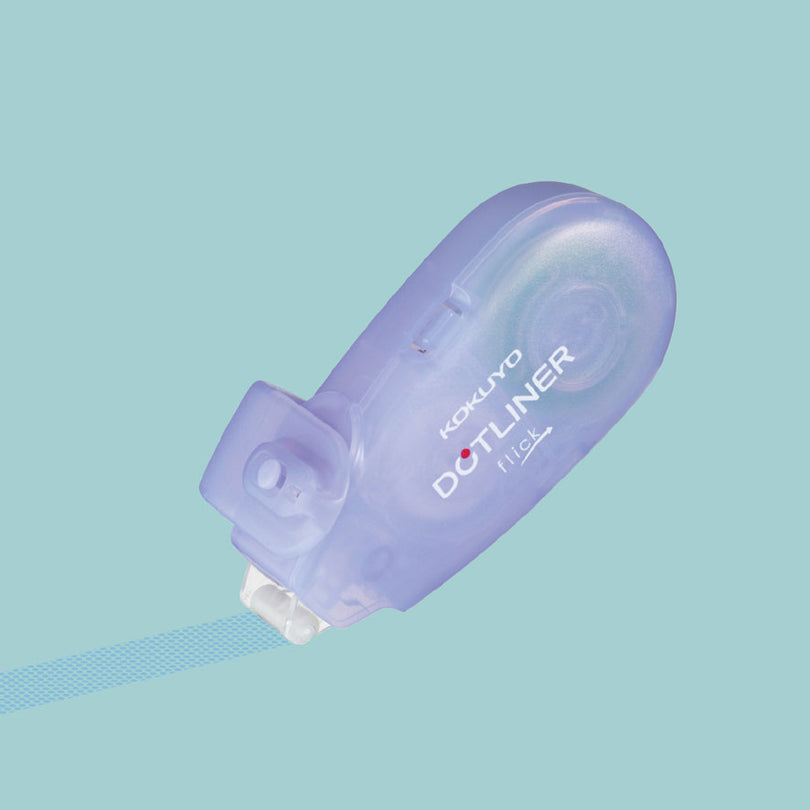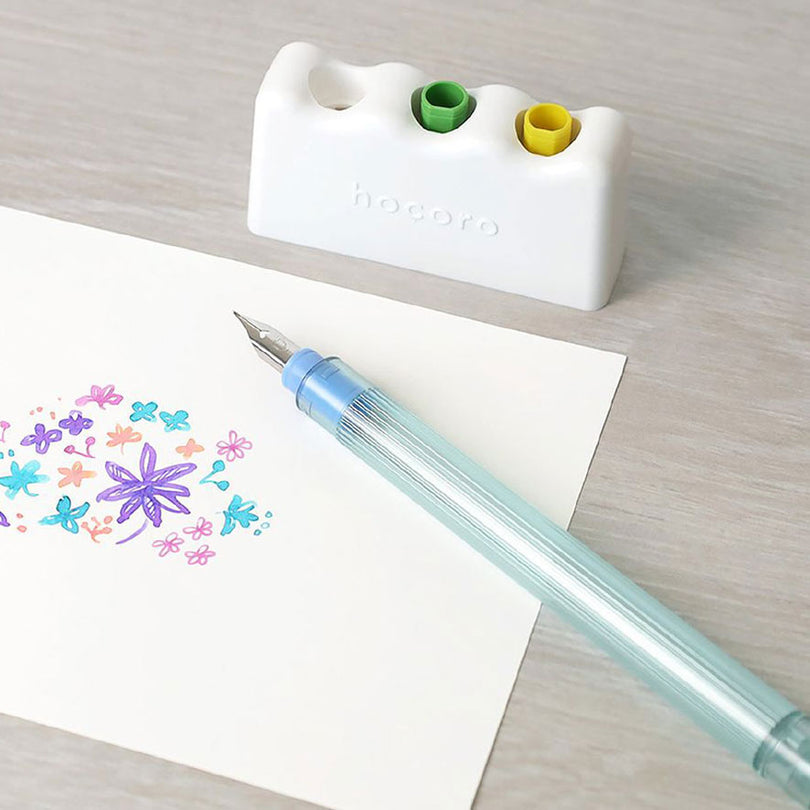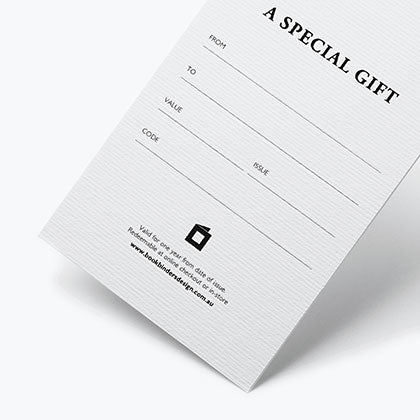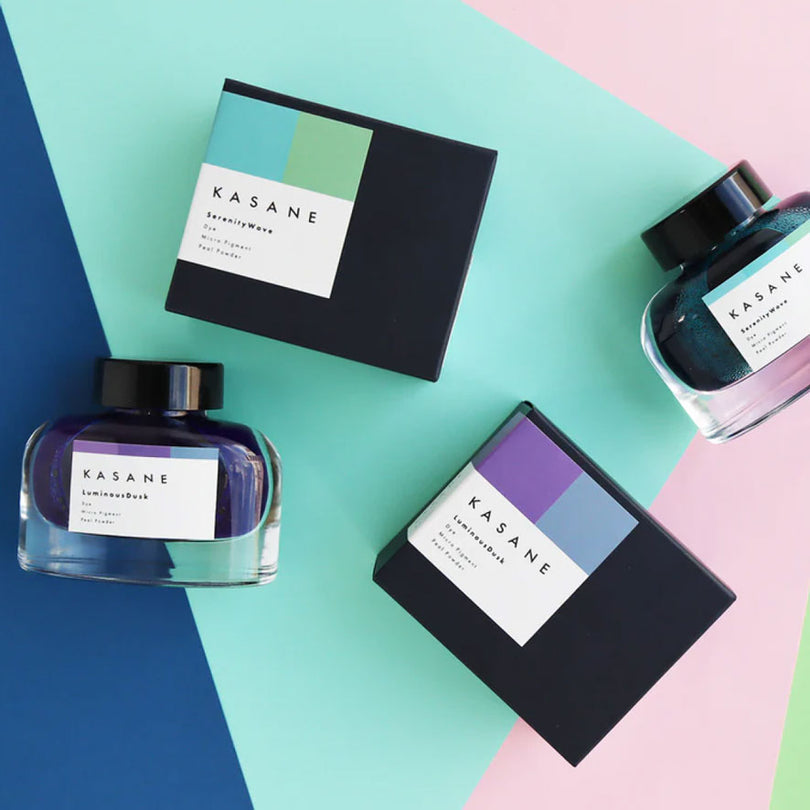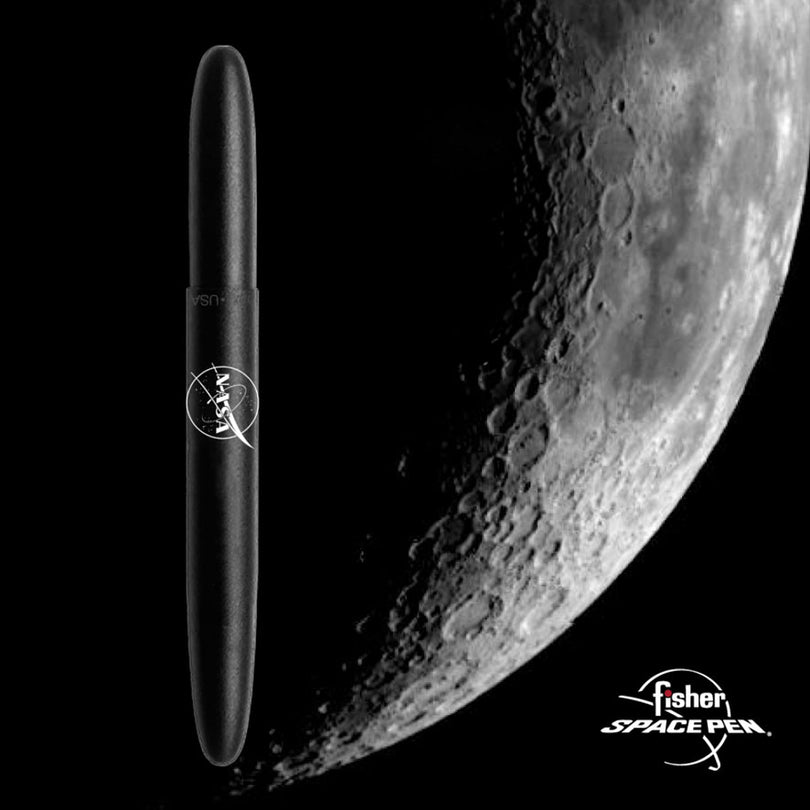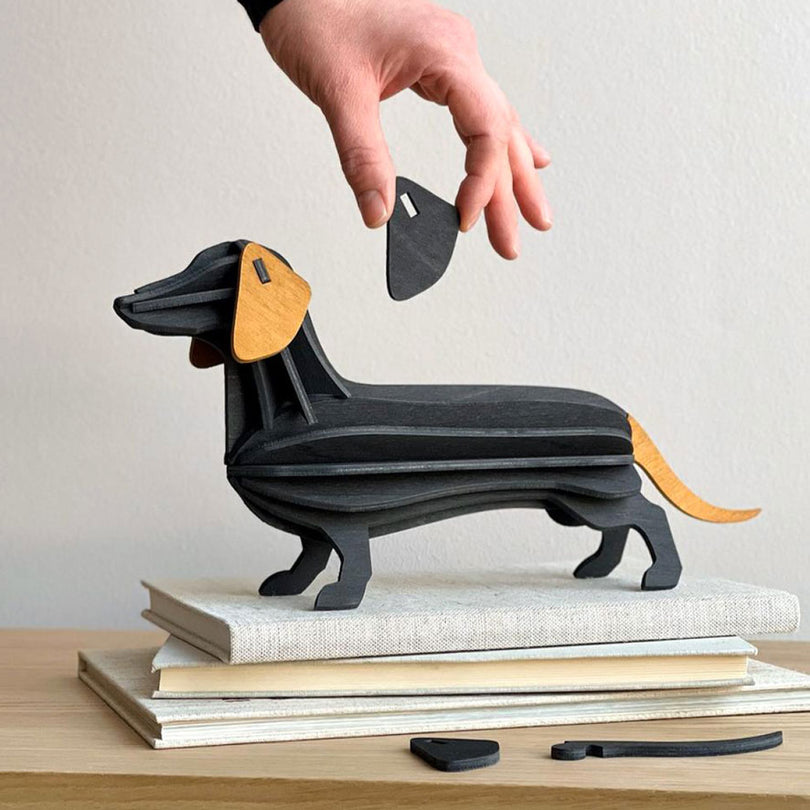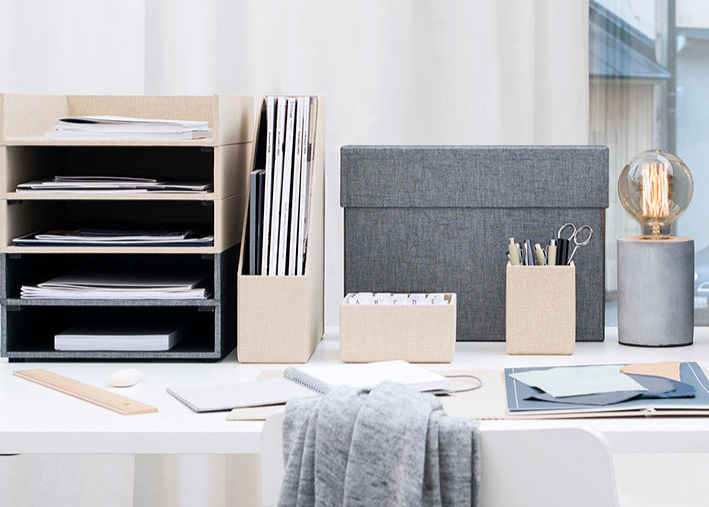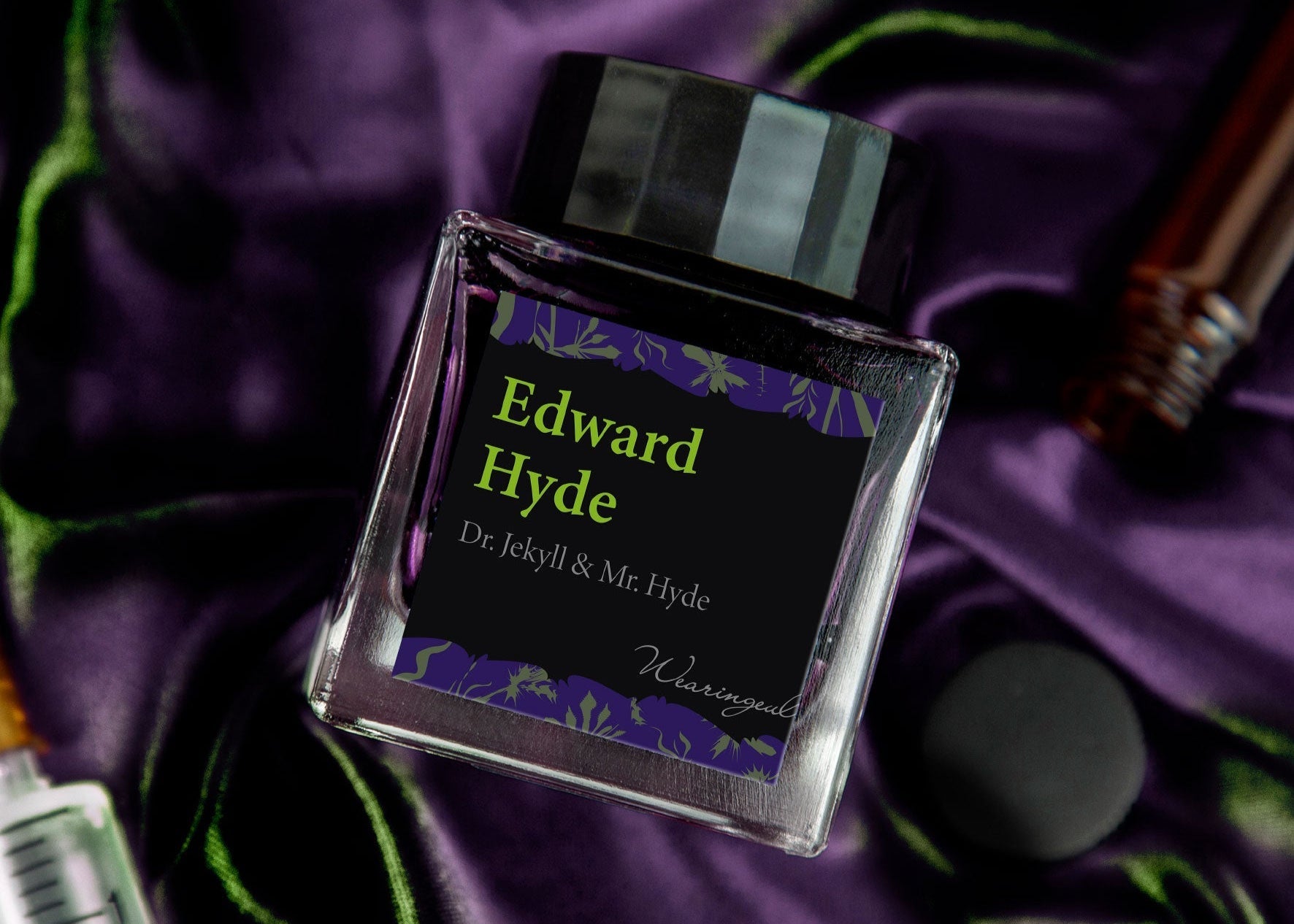The nib is the heart of the writing experience. Its size, shape, flexibility, and the material it’s made from all influence how your fountain pen feels and writes.
Understanding nibs is essential if you're looking to buy your first fountain pen and useful if you want to expand your collection or change your writing style. This guide walks you through the basics: how nibs work, the different sizes and shapes, the effects of flexibility, and how to choose the right one for your style.
Parts of the Fountain Pen Nib
The nib is the pointed piece of metal at the end of a fountain pen that delivers ink onto the page. It may look simple, but its design is the result of centuries of refinement. At a glance, a nib consists of:
- Tines: The two prongs that split down the middle, allowing ink to flow to the tip.
- Slit: The central cut between the tines; this is where capillary action draws ink from the feed to the paper.
- Breather hole: The small hole above the slit, which helps regulate ink flow and prevents cracking.
- Tip (or tipping material): Usually made of hard-wearing metal like iridium, this is the part that touches the paper.
The rest of the nib – its shape, material, and size – will determine everything from line width to how smooth or feedback-rich it feels.
Nib Sizes: From Extra Fine to Double Broad
When people talk about nib size, they’re usually referring to the width of the line it produces. Manufacturers use slightly different standards, but here are the most common options:
- Extra Fine (EF): Produces the thinnest lines. Ideal for small handwriting in tight layouts and precision drawing. May feel scratchier on rough paper because of the tiny tip surface.
- Fine (F): A versatile size that balances precision with smoothness. Popular for everyday writing.
- Medium (M): Offers a wider line with more ink on the page. Smooth and excellent for showing off ink shading.
- Broad (B): Great for signatures, decorative writing, and showcasing inks with sheen or shimmer.
- Double Broad (BB) and beyond: Very wide with generous ink flow. Often used for calligraphy-style writing.
It’s worth noting that Japanese fountain pens tend to run finer than European brands such as Pelikan, Lamy or Kaweco. A Japanese Medium can be closer to a European Fine.
Specialty Nibs
Beyond the standard fine-to-broad range, there’s a world of specialty nibs that can completely change how your writing looks and feels:
- Stub nibs: Have a flat tip that creates thick vertical strokes and thin horizontal strokes. They produce elegant, calligraphic writing with minimal effort.
- Italic nibs: Similar to stub nibs but with sharper edges, giving a more pronounced variation between strokes. They require more control.
- Architect nibs: Reverse of an italic: thin vertical lines and thick horizontal ones, popular with people who write in block capitals.
- Music nibs: Typically broader with two slits for increased ink flow. Originally designed for writing musical scores.
- Needlepoint or ultra-extra-fine nibs: For extremely fine detail and microscopic handwriting.
- Flex nibs: Allow the tines to spread with pressure, creating dramatic line variation with thin upstrokes and thick downstrokes.

Nib Materials and Their Impact
Historically, nibs were made from softer metals like pure gold or even brass, which provided a pleasant writing experience but wore down quickly. As fountain pens evolved, manufacturers began combining precious metals with harder alloys to balance comfort and longevity.
By the late 19th and early 20th centuries, gold had become a hallmark of quality, while hard tipping alloys such as osmium or iridium were introduced to dramatically extend a nib’s lifespan.
- Stainless Steel: Affordable, durable, and reliable. Modern steel nibs can be just as smooth as gold, though usually stiffer.
- Gold: Traditionally prized for its resilience and flexibility. Common in 14k, 18k, and 21k alloys. Gold nibs can feel softer and more responsive, especially when paired with good tipping and polishing.
- Titanium: Offers a unique semi-flex feel and a slightly springy bounce, sitting somewhere between steel and gold.
Regardless of the main metal, most nibs have a different tipping material welded to the end to resist wear.
How Nib Shape Affects Writing
While nib size determines how wide your lines are, the shape of the tip – known as the grind – can dramatically change the character of your handwriting. The grind controls stroke variation, smoothness, and even how forgiving the nib is of different writing angles.
Here are the most common examples:
- Round nibs: Most common; produce uniform lines in all directions.
- Oblique nibs: Ground at an angle to suit writers who hold their pens rotated.
- Custom grinds: Many fountain pen enthusiasts send nibs to specialists for custom shapes (e.g., cursive italic, architect) to match their handwriting style.
Flexibility: Soft, Semi-Flex or Rigid?
Some nibs remain firm no matter how you press, while others open up and create dramatic variation between thin and thick strokes. Flexibility can completely transform how handwriting looks. Flex nibs were once common in vintage pens, but most modern pens are designed with firmer nibs for durability.
- Rigid nibs: Consistent line width, durable, and great for fast or heavy-handed writers.
- Soft or semi-flex nibs: Offer gentle line variation with minimal effort. Ideal for expressive signatures and artistic handwriting.
- Full flex nibs: Allow dramatic variation but require control. These are more common in vintage pens or modern specialty models.
Choosing the Right Nib for Your Needs
With so many options available, the right choice depends on what’s best for you – your handwriting habits, your paper, and even the kinds of fountain pen inks you enjoy. When weighing your options, keep these factors in mind:
- Your handwriting size: Small, neat writing pairs best with finer nibs; larger handwriting works with broader nibs.
- Paper type: On absorbent or lower-quality paper, a fine nib can help reduce feathering. On smooth, premium paper, broader nibs shine.
- Ink behaviour: Broad, wet nibs can bring out shading and sheen; fine nibs may mute these effects.
- Purpose: Everyday note-taking, journaling, signatures, or calligraphy all suit different nibs.
Calligraphy and decorative writing often call for specialty nibs – italics, stubs, or flex nibs that naturally create thick and thin strokes for expressive lettering.
If possible, test pens in person before buying. If you’re in Melbourne, you can explore different fountain pens and nibs right in our store.
Nib Maintenance and Care
A well-cared-for nib can last a long time. Thankfully, maintenance is simple, and just a few habits will keep your pen writing smoothly. The goal is to avoid problems before they start!
- Clean regularly: Flush your pen with lukewarm water every few weeks (more often if changing inks).
- Avoid excessive pressure: Fountain pens should work with a light touch; pressing too hard can misalign tines or damage tipping.
- Check alignment: If a pen feels scratchy, the tines may be misaligned. This can often be fixed by a professional nibmeister.
- Store your pen capped: Prevents ink from drying out in the feed and nib and minimises the risk of dropping your pen on its nib tip!
When to Consider Nib Customisation
Say you’ve tried a few pens and developed preferences – you may discover that a standard nib isn’t quite enough. That’s where customisation comes in. Skilled nib artisans, called nibmeisters, can adjust or reshape a nib to suit your exact writing style. Common services include:
- Smoothing: Adjusts how the nib feels on paper.
- Flow adjustment: Increases or decreases ink output.
- Custom grinds: Changes the line variation and character to match your personal style.
Skilled nib artisans can also repair damaged or worn nibs.

Next Steps in Exploring Your Nib Options
We've tried to show you that a fountain pen nib isn’t just a functional part, but a personal choice that shapes your writing. Understanding how size, shape, material, and flexibility work together will help you find a pen that truly feels like an extension of your hand.
Take your time exploring our fountain pen collection and our range of replacement nibs, and if you’re nearby, we’d love for you to visit our Melbourne store to try them out in person!
Questions? We’d love to hear from you, so don’t be shy! Contact us on Facebook, Instagram or via email at info@bookbindersdesign.com.au

